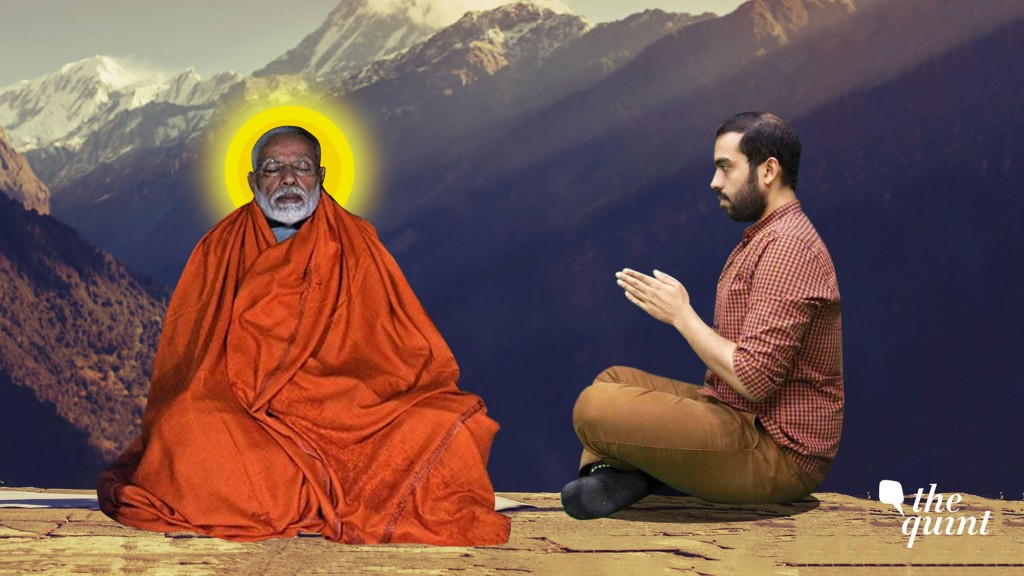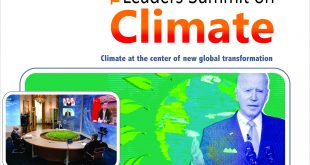The Saffronisation of India
Causes and Implications
Aftab H. Wahla
The result of the gruelling seven-phase Indian election (from April 11 to May 19, 2019) to the 17th Lok Sabha, the lower house of Indian parliament, has not only stunned political pundits and the opposition parties in India but has also sent shockwaves across South Asia, besides intensifying Kashmiris’ alienation from the Indian state, horrifying Muslims and Christians in India and bringing to its culmination the saffronisation that has laid bare the conservative credentials of the Indian state and society. As per the official results, the BJP-led National Democratic Alliance (NDA) secured 353 seats, with the Hindu nationalist party BJP single-handedly winning 303 and emerging thereby as the single largest political party. Indian National Congress-led United Progressive Alliance (UPA) failed to arrest the spread of Hindutva influence as it could hardly win 91 constituencies, INC itself could bag 52 seats only. Since India, by dint of its diplomatic, economic, demographic and geostrategic clout, has emerged of late as one of the important players in a fast-evolving multipolar world, therefore, electoral outcome and formulation of government there do carry huge significance for regional peace and security as well as for global finance and diplomacy.
Though the thumping victory of BJP – widely read as Modi’s – seems surprising given the huge embarrassment resulting from Pakistan’s befitting response to Indian aggression in the wake of the so-called Balakot strike, Modi’s ridiculous claim about sending email and using digital camera even before they were invented, poor performance on economic front due to woolly-headed and hastily-imposed demonetization, poorly-implemented goods and services tax( GST), worst unemployment levels in 40 years and agriculture crisis, analysts well-versed in social and political history of India were predicting a landslide win for NDA especially given the fast-metastasizing sectarian, ethnic and caste-based division of India and Modi’s deliberate attempts to capitalize on these sentiments for catapulting his party again to the power corridors.
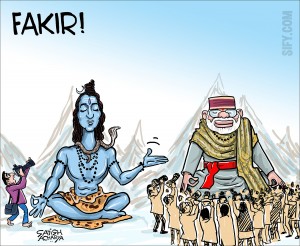 So, now when the results have been issued, and Narendra Modi has become the Prime Minister of India for a second term, it is apt to discuss all factors that played a key role in clinching absolute majority for Indian far-right political parties.
So, now when the results have been issued, and Narendra Modi has become the Prime Minister of India for a second term, it is apt to discuss all factors that played a key role in clinching absolute majority for Indian far-right political parties.
Indian society is hierarchical, exclusive, unequal and extremely polarized and these factors are against the basic principles of democracy. In the words of Dr BR Ambedkar, the architect of Indian constitution, democracy in India is only a top-dressing on an Indian soul, which is essentially undemocratic. Though Nehru’s socialistic and secularistic leaning helped maintain some sort of elitist secularism, pluralism and democracy in India for decades, but centuries-old socio-political order remained impervious to all these lofty ideals and as soon as Indian National Congress failed to perform, Hindutva emerged from the fringes to mainstream in the form of Bharatiya Janata Party (BJP). These group-based identities are responsible for worst sectarian conflicts like 1984 attack on Golden Temple in Amritsar, demolition of Babri Masjidin 1992 and Gujarat massacre of 2002. In short, it is easy to conclude that India is hugely polarized society where religious narrative wrapped in slogans for development and growth can capture the attention of the masses and any party that arouses these sentiments would surely achieve electoral triumph. Amit Shah-led BJP mastered this art and consequently routed all opponentsin the polls.
Second major reason that is also the biggest factor for popularizing Hindutva even in seemingly progressive and moderate segments of Indian society is Narendra Modi himself. He dwarfed the leadership of all other parties and was projected as a panacea for all problems India is faced with and those it may face in future. Personal credibility, humble family background, religious inclination, strong decision-making power and other traits associated with Narendra Modi were made a part of BJP’s grand election campaign. BJP candidates sought their legitimacy by supporting Modi and displaying his picture on every platform they happened to have. Modi was portrayed as a puritanical and incorruptible leader who had no personal motives except reviving great Hindu civilization that performed intergalactic voyage and performed plastic surgeries thousands of years ago (as per popular Hindu beliefs). His personality cult was so dominant and overwhelming that the electorate ignored his blunders of demonetization and GST assuming that he intended nothing wrong but corrupt and non-cooperative bureaucracy intentionally turned his visionary steps into disasters. The election 2019 was all about personalities. It was fight between secular-leaning Rahul Gandhi and religiously-motivated, nationalistic Narendra Modi. The latter, however, won due to better manoeuvring skills and the former lost due to demonstration of weak leadership and political wisdom. The Economist rightly commented, “The BJP’s remarkable victory is down to the prime minister, not the party.”
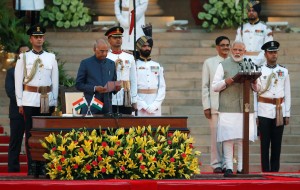 The amalgam of Hindutva and militant nationalism proved another decisive factor in the walloping victory of BJP. In 2014, BJP won the election on the promise of development, marginalizing the ideological aspect of their narrative and moulting their hardliner outlook. Irrespective of the fact whether its promise of development materialized or not, 5-year rule of BJP proved irrefutably that they had no intention to sideline their ideological underpinning. Hindu nationalism was made part of education system, Urdu vocabulary was deliberately replaced with Sanskrit, mob-lynching intensified, cow vigilantism became a norm and religious minorities, particularly Muslims, were excluded from mainstream politics. BJP-led and RSS-motivated scheme of gradual saffronization of India became vividly evident to the world with the appointment of radical religious figurehead, Yogi Adityanath as the chief minister of India’s most populous state, Uttar Pradesh that has massive presence of Muslim minority. In addition, fielding of BJP candidates who openly professed Hindutva, ridiculed Gandhi and praised Gandhi’s murderer, Nathuram Godse spoke volumes about the intentions of BJP. Despite this, Pragya Singh Thakur, who created national controversy by declaring Nathuram Godse as patriot, won her constituency, BJP secured UP again and Modi re-elected again for next five years with a bigger mandate. The result, in effect, depicts that majority of Indian population favours Hindutva, lynchings, brutal killings under the pretext of cow protection and ghettoization of minorities, and dislikes Gandhi and Nehruvian philosophy of secularism and pluralism.
The amalgam of Hindutva and militant nationalism proved another decisive factor in the walloping victory of BJP. In 2014, BJP won the election on the promise of development, marginalizing the ideological aspect of their narrative and moulting their hardliner outlook. Irrespective of the fact whether its promise of development materialized or not, 5-year rule of BJP proved irrefutably that they had no intention to sideline their ideological underpinning. Hindu nationalism was made part of education system, Urdu vocabulary was deliberately replaced with Sanskrit, mob-lynching intensified, cow vigilantism became a norm and religious minorities, particularly Muslims, were excluded from mainstream politics. BJP-led and RSS-motivated scheme of gradual saffronization of India became vividly evident to the world with the appointment of radical religious figurehead, Yogi Adityanath as the chief minister of India’s most populous state, Uttar Pradesh that has massive presence of Muslim minority. In addition, fielding of BJP candidates who openly professed Hindutva, ridiculed Gandhi and praised Gandhi’s murderer, Nathuram Godse spoke volumes about the intentions of BJP. Despite this, Pragya Singh Thakur, who created national controversy by declaring Nathuram Godse as patriot, won her constituency, BJP secured UP again and Modi re-elected again for next five years with a bigger mandate. The result, in effect, depicts that majority of Indian population favours Hindutva, lynchings, brutal killings under the pretext of cow protection and ghettoization of minorities, and dislikes Gandhi and Nehruvian philosophy of secularism and pluralism.
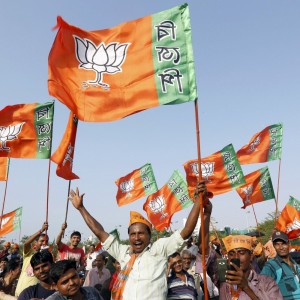 Narrative, resources and electoral strategy play a determinant role in the ultimate success or failure of a political party, and also in fighting the incumbency factor. BJP had all of these in abundance. As per a report published in The Diplomat, BJP obtained 95 percent of all private donations. The widespread financial and logistic support extended by RSS was in addition. Their alliance was so resourceful that it mobilized voters in unprecedented numbers. BJP had a better-greased party machine, backed up by street power of hundreds of Hindu nationalist groups. Perfectly-timed conflict with Pakistan provided unqualified opportunity for BJP to divert public debate from poor economic performance to national security, and Modi did not shy away from politicizing the mythical Balakot strike to his favour. Coupling national security with re-election of Modi, BJP phrased Modi with muscular nationalism and the only one who can respond to the terrorist activities, purportedly carried out with Pakistan’s support, effectively. By carefully arranging interviews with selected journalists and anchors who were irredeemably biased in favour of BJP, dominating social media, circulating fake news on WhatsApp, tactful tackling of print media, BJP did succeed in the formation of “Manufactured Consent”. Strategically speaking, BJP-chief strategist Amit Shah fielded most popular figures on chessboard of constituencies to turn Modi’s popularity into parliamentary majority. In 2014, BJP had 1.67 seat multiplier that was highest in Indian electoral history, now this ratio is even higher.
Narrative, resources and electoral strategy play a determinant role in the ultimate success or failure of a political party, and also in fighting the incumbency factor. BJP had all of these in abundance. As per a report published in The Diplomat, BJP obtained 95 percent of all private donations. The widespread financial and logistic support extended by RSS was in addition. Their alliance was so resourceful that it mobilized voters in unprecedented numbers. BJP had a better-greased party machine, backed up by street power of hundreds of Hindu nationalist groups. Perfectly-timed conflict with Pakistan provided unqualified opportunity for BJP to divert public debate from poor economic performance to national security, and Modi did not shy away from politicizing the mythical Balakot strike to his favour. Coupling national security with re-election of Modi, BJP phrased Modi with muscular nationalism and the only one who can respond to the terrorist activities, purportedly carried out with Pakistan’s support, effectively. By carefully arranging interviews with selected journalists and anchors who were irredeemably biased in favour of BJP, dominating social media, circulating fake news on WhatsApp, tactful tackling of print media, BJP did succeed in the formation of “Manufactured Consent”. Strategically speaking, BJP-chief strategist Amit Shah fielded most popular figures on chessboard of constituencies to turn Modi’s popularity into parliamentary majority. In 2014, BJP had 1.67 seat multiplier that was highest in Indian electoral history, now this ratio is even higher.
As The Economist reported, “Mr Modi’s strutting, sneering nationalism only part of the story. His opponents aided their own defeat.” It is absolutely right. INC, the only rival political party at national level, despite help from a sea of regional parties failed both in narrative building and forging alliance to dent the formidable dominance of BJP. The election demonstrated that Congress lacked all advantages the BJP had: resources, narrative, electoral strategies, and charismatic leadership like Narendra Modi. Historically, Congress has relied upon its secular underpinning to attract religious minorities and moderate and progressive Hindu segments. This time, however, the INC supremo Rahul Gandhi, with the help of his sister Priyanka Gandhi, tried to project Congress as the representative party of Hindu hardliner as well, but this reactionary and vague religious nationalism marred by allegation of being a Muslim appeasement policy did not work and the people of India voted the party that is conspicuously and unambiguously Hindu and promises renaissance of Hindu civilization. As far personality cult, Rahul Gandhi was no match for Modi or Amit Shah. So, the BJP outplayed the INC in art of electioneering.
Another factor that helped Modi clinch the electoral victory was the highly-questionable part played by Indian military and civilian institutions: Indian version of bureau of statistics tried its best not to reveal the 40-year worst unemployment crisis; Indian Air Force delayed revelation that it had shot down its own helicopter during the brief dogfight with Pakistan Air Force on 27th February so as to not spoil the warrior-like image of Narendra Modi; moreover, Indian Election Commission issued series of decisions that put BJP in advantageous position vis-à-vis opposition, and earned unprecedented criticism from opposition parties.
The underlying factors responsible for Modi’s sweeping victory would manifest themselves in Indian domestic and foreign policy. India that hosts the second highest population in the world, enjoys tenth place in foreign direct investment and offers huge market for consumption of arms and commodities, is considered as one of the key players in this era of globalization. This centrality of India in global trade, security and diplomacy offers plausible reasons why change in the government matters the most for world community. Now that Modi has returned with a bigger mandate, it would be pertinent to discuss the possible regional and global ramifications that we may see in Modi’s second term.
One thing is clear: the emergence of Modi is part of the wave of ever-spreading, worldwide ethno-nationalism underpinned by militant supremacism. The wave is weakening rule-based multipolar order, undermining the fight against existential threats to humanity and hampering collective efforts for global good. Modi-led BJP, which emerged from the fascist movement inspired by 1920’s and 30’s Nazi and Fascist movements, demonstrated in its previous tenure that it has ideological and material resources to turn Indian democracy into a fascist authoritarian regime. It is increasingly becoming evident that authoritarian regimes across the world are forging alliance so as to continue abuse of human rights and suppression of right of self-determination. The latest example of this global connivance is India’s backing of Israel in keeping Palestine group out of UN bodies; this is a clear from the policy India has maintained since the partition. The most plausible explication of this deviation can only be offered in view of the fast-developing consensus among ethno-nationalist and far-right tableau of leaders from Donald Trump of the United States to Rodrigo Duterte of Philippine. It is highly expected that ongoing abuses of human rights and suppression of minorities would intensify across the world during Modi’s second term.
Modi has come to the power while riding on anti-Pakistan and anti-Islam sentiments. The parent organization of BJP, RSS is well-known for its Hindutva philosophy. One cannot expect improvement in regional connectivity in South Asia for operationalization of SAARC. Instead, Bay of Bengal Initiative for Multi-sectoral Technical and Economic Cooperation (BIMSTEC), an India-led regional organization created as a counterbalance of SAARC so as to isolate Pakistan regionally as well, would be strengthened and expanded. Afghanistan would also remain the battlefield for Pakistan and India. It is a well-known fact that since the US-led toppling of Taliban regime, Kabul has drifted away from Pakistan’s influence and has established a strategic relationship with India. India’s close ties with Kabul are meant to strengthen US-installed government so as to fend off Taliban and, in turn, prevent Pakistan from exerting influence there. So, India-Afghanistan-US nexus would remain strong and impregnable for Pakistan.
The stumbling blocks between India and China are US-China trade war, China’s unwavering support for Pakistan, India’s refusal to participate in Belt and Road Initiative and a long-standing border dispute. Although there is a possibility of enhanced trade and investment between China and India, establishment of strategic ties is highly unlikely given the former’s vital financial and strategic stakes in Pakistan.
It is an irrefutable reality that Modi has unique capability to develop personal ties with world leaders. Though this can be understood in terms of India’s vast markets, Pakistan’s Foreign Office would have to work proactively to neutralize Indian lobbying aimed at getting Pakistan blacklisted by Financial Action Task Force (FATF). In addition, Pakistan’s diplomatic outreach in major world capitals would be crucial in frustrating India’s attempts to get permanent membership of the UN Security Council. Constant campaign to inform the world about Modi’s past record including deliberate inaction over massacre of Muslims of Gujarat and those of his political lieutenants would help Pakistan to build proper case for raising voice for granting right to self-determination to Kashmiris and other suppressed ethnic and religious minorities.
There is no denying the fact that re-election of Modi bodes ill for regional peace and security. Swearing-in of the radical Hindu proselytizer has shocked the Muslims and Kashmir alike. BJP-openly stated policy of ending Kashmir’s special status through abrogation of article 370 and article 35 A is bound to face fierce Kashmir’s armed resistance and recurrence of any Pulwama-like incident would lead towards nuclear confrontation with unimaginable consequences. Pakistan must continue its effort by repeatedly offering an olive branch to India as it would put India in defensive position, thereby enabling Pakistan to improve its international diplomatic position. It is high time we engaged in aggressive diplomacy otherwise, newly-formed bonhomie between Modi and world leaders is bound to have severe financial and diplomatic consequences for Pakistan.
 Jahangir's World Times First Comprehensive Magazine for students/teachers of competitive exams and general readers as well.
Jahangir's World Times First Comprehensive Magazine for students/teachers of competitive exams and general readers as well.
